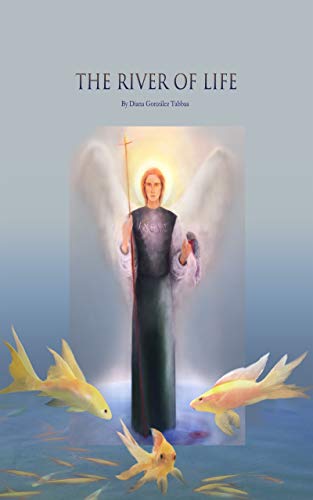
Genre
Children’s Books, General Fiction
Audience
Ages 8–18
Author’s Worldview
Catholic
Year Published
2019
Themes
Catholicism, suffering, mourning, death, grief, stages of grief, nature, hope, joy, faith, prayer, Mary, saints, rosary, childhood
Reviewed by
Ruby Shao
The death of little Anthony’s father shakes his faith until a heaven-sent friend helps him find his way back to God.
The soothing power of God, Our Mother, and the saints flows in this coming of age story about a boy startled by grief. Anthony, a 12-year-old only child, enjoys a simple life immersed in nature with his loving father and mother. Devoutly Catholic, the family tends a Rosary Garden, comprised of rose bushes and a tree that dovetails into the shape of a rosary. Though sick, Anthony’s father works with him to install a statue of Our Lady of the Rosary holding the Christ Child in the Rosary Garden, then tells Anthony that they will next build a treehouse together. When Anthony’s father dies, Anthony feels far from God, anguished by the tragedy that has darkened his world. A young man befriends Anthony, helping him heal from his loss and regain his dwindling faith. Ethereal and charming, the novel celebrates the beauty of creation, the renewal of hope, and the redemption of suffering. Catholic readers from eight to 18 years old would benefit from the story.
Delivered in elegant prose, The River of Life moves slowly until a turning point in Chapter 3, which begins with the inscription, “Arise, give praise in the night, in the beginning of the watches: pour out thy heart like water before the face of the Lord” (Lamentations 2:19). Mourning his father, Anthony shrinks from the familiar comforts of his childhood, now disturbing in the absence of the man who once anchored him. A swirl of agitated fears and questions descends over Anthony. The author describes his struggles authentically, in ways that would resonate with those who have endured similar trials. For instance, Anthony notices the gloomier aspects of whatever he perceives. He expresses ambivalence toward God as he first blames Him, saying, “I prayed so much, but God didn’t hear me,” then chastises himself for perhaps pulling away from God. Fixating on the plans he had with his father, he sinks into sadness about their unfulfillment. His natural response reveals his brokenness, his need for divine comfort, which buoys him throughout the rest of the book. Just as in reality, God sends others to not only accompany Anthony, but also advance his aspirations that he thought had died with his loved one.
The author often teaches parts of the faith using gems buried throughout the narrative. Upon Anthony’s misplacement of a treasured belonging, his friend identifies Saint Anthony of Padua as “a patron of finding what has been lost” to petition for aid. Depictions of Saint Raphael the Archangel further illuminate the communion of saints. Retrieving the Bible of Anthony’s father, Anthony’s mother tells Anthony that like the prayers of the rosary, the Scriptures will draw Anthony closer to God in a spirit of peace. She gives him the volume, which he presses to his heart. In another scene, Anthony’s mother reminds her son to keep praying for their beloved dead who may remain in purgatory, even if they seemed holy enough to have already reached heaven. As a final example, in gazing at his sketch of the Blessed Mother, Anthony reflects, “She knew more deeply than anyone the sorrow of losing a loved one.” The River of Life provides a gentle stream of lessons that would complement or reinforce the catechesis of youth.
In conjuring a Catholic aura, two features mar the development of the plot, characters, and dialogue. First, reverence for God’s creation leads to portrayal after portrayal of Anthony in some stunning environment, as he speaks primarily to animals, trees, and other non-human organisms. He rarely interacts with people, and when he does, he addresses only his parents and one new friend. As a result, readers receive a limited view of his psyche, and his monologues or conversations sometimes neglect to drive the story forward. Secondly, Catholic traditions and references abound with few explanations. Much of the action concerns phenomena that only Catholics with knowledge of devotions would grasp. Since almost every significant event alludes to the Church, non-Catholics would probably find the book difficult to understand. Nonetheless, anyone open to learning about Catholicism could appreciate The River of Life’s light and encouragement.
Ending with a sweet ode to the cyclical bounty of Providence, the novel can inspire children with wonder as a remedy for pain. In the words of Anthony’s mother near the start, “That is the nature of love; it makes suffering more bearable, and when joined with that of Christ, even sacred.”
Join Here for FREE to Never Miss a Deal
Find new favorites & Support Catholic Authors
The Book of Jotham by Arthur Powers
Experience Christ through the eyes of Jotham, his disabled disciple.
PANIC! (unSPARKed #3) by Corinna Turner
It’s a three hour drive unSPARKed, and for city-folk, anything might cause PANIC!
The Little Mermaid by Hans Christian Anderson
Discover the far deeper, more salvific tale that Disney turned into romantic fluff.
Freeing Tanner Rose by T.M. Gaouette
Hollywood Starlet meets Kung Fu Country boy with a God obsession.
Saving the Statue of Liberty By Andrea Jo Rodgers
Can John save the Statue of Liberty and keep from getting kicked off the team and out of the Academy?
A Good Girl by Johnnie Bernhard
When an old man dies his daughter must trace her family tree to find the ability to forgive him.
Best Books of 2022
Our favorite book finds of the year!
Murder Most Picante by Karina Fabian
The government can’t decide whether he is an illegal immigrant or invasive species. God expects a respectable dragon to find justice for others. This Dragon is not having a good time of it!
A Distant Prospect by Annette Young
Lucy has been broken by the horrors of polio and the war for Irish Independence. Can Australia offer her a new life and a new home?
Revelation by Flannery O’Connor
Flannery O’Connor takes us into the mental experience of one of those people Jesus condemned.
Sydney and Calvin Have a Baby by Adrienne Thorn
Sydney writes romances but living her own romance will require more courage than anything yet required of her.
The Rescue Sisters Series Adventures by Karina Fabian
Kickass Catholic Nuns in Space- what more do you need?!
If Wishes Were Dragons By Karina Fabian
What happens when LARPing becomes a lot more real than a group of D&D players can handle?
The Fire of Eden (The Harwood Mysteries Book 3) by Antony Barone Kolenc
The mystery of a stolen treasure might hold the key to Xan’s discernment about whether God is calling him to the priesthood or to Lucy.
Shooting At Heaven’s Gate, by Kaye Park Hinckley
How does an ordinary boy become a mass murderer?
The Lost Vessel by Mark Adderley
McCracken joins a treasure hunt for Captain Nemo’s lost ship in this exciting adventure that adds another chapter to Jules Verne’s greatest creation.
The Poppy and The Rose by Ashlee Cowles
While abroad in England, Taylor discovers a mystery linking her to an heiress and passenger aboard The Titanic.
The Phantom Phoenix
A humble phoenix rises from the ashes to clean up corrupt, 1920s Chicago in this thrilling superhero comic
Saint Michael: Above the 38th Parallel by Shanti Guy
The true story of St. Michael, the original punch-communism-in-the-face superhero
August & September New Book Releases
Step into Fall with a Good Book


